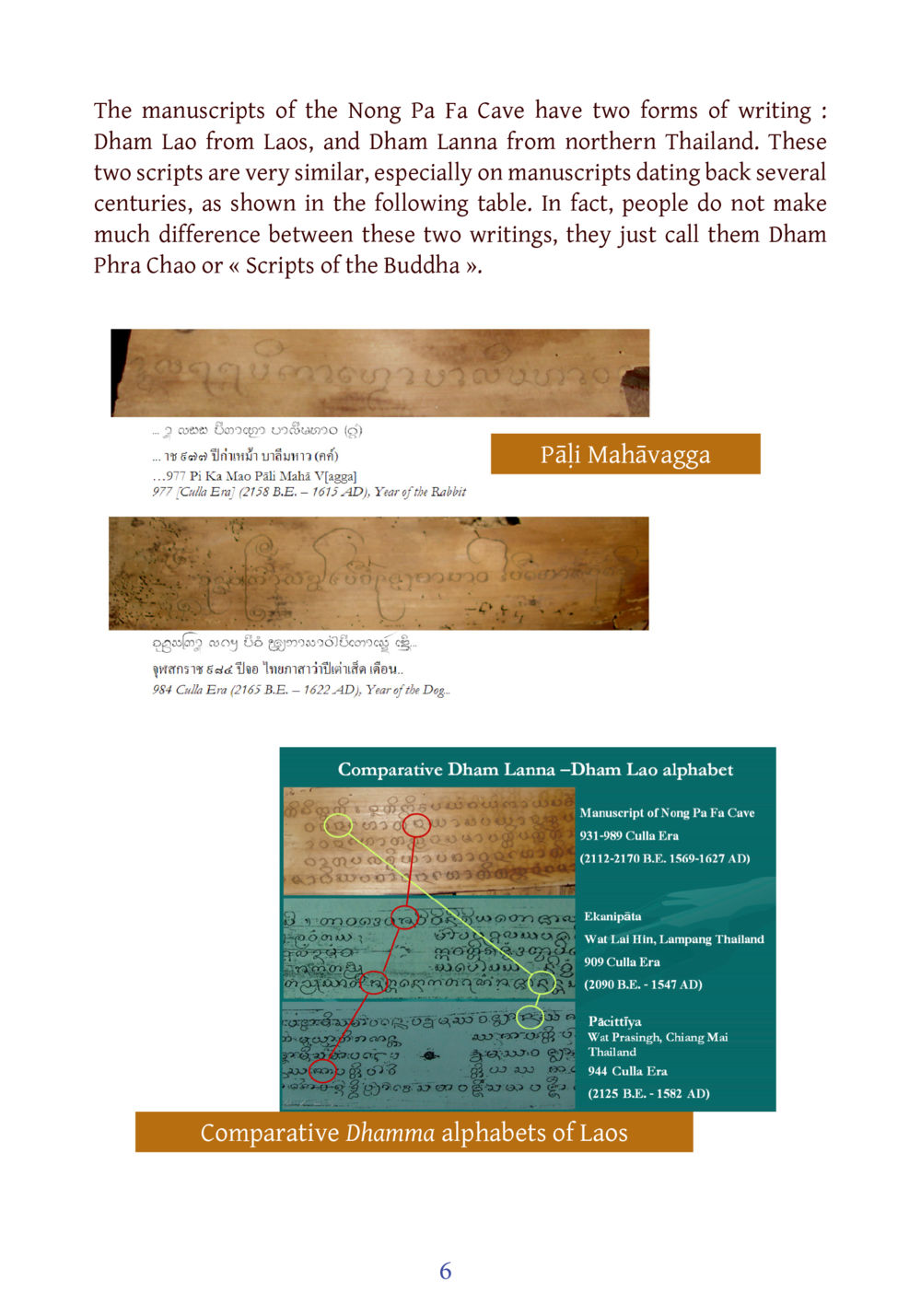Exploring the Manuscripts of Nong Pa Fa Cave : หน้า 27/141
DIRI Journal : หน้า 27/141 An in-depth look at the Dham Lao and Dham Lanna writings found in Nong Pa Fa Cave and their historical significance.
8 ครั้ง

สรุปเนื้อหา
The manuscripts of the Nong Pa Fa Cave showcase two primary forms of writing: Dham Lao from Laos and Dham Lanna from northern Thailand. While these scripts exhibit notable similarities, especially in manuscripts from several centuries ago, they are often collectively referred to as Dham Phra Chao, or 'Scripts of the Buddha.' The historical timelines of the manuscripts indicate they were written between the years 931-989 Culla Era and include texts such as Pāli Mahāvagga and Ekanipata. Understanding these writings not only sheds light on the rich cultural interplay between Laos and Thailand but also emphasizes their shared spiritual heritage in the Buddhist tradition. Dhamma alphabets of Laos highlighted in these manuscripts underscore their importance in preserving Buddhist teachings in the region.
หัวข้อประเด็น
-History of Dham Lao and Dham Lanna
-Significance of Nong Pa Fa Cave
-Comparison of ancient manuscripts
-Buddhist script evolution
-Cultural exchange between Laos and Thailand
ข้อความต้นฉบับในหน้า
หน้าหนังสือทั้งหมด













































































































































